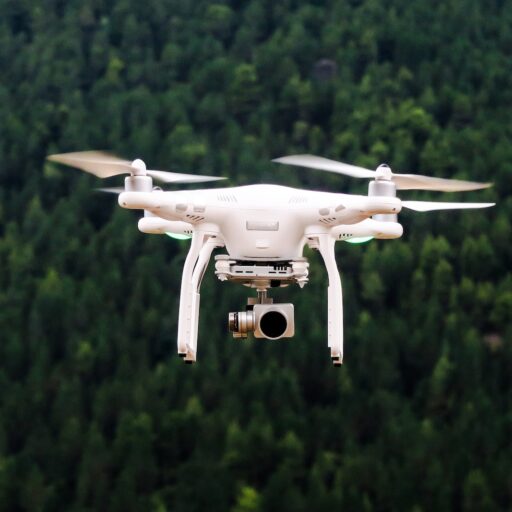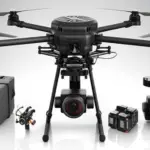Support our educational content for free when you purchase through links on our site. Learn more
How Drone Brands Nail Software Updates & Support in 2025 🚁
Ever wondered what happens behind the scenes when your drone’s firmware flashes a “New Update Available” alert? Or how some brands seem to have your back with lightning-fast customer service while others leave you stuck in an endless email loop? As drone pilots at Drone Brands™, we’ve navigated the thrilling highs and frustrating lows of drone software updates and support. Spoiler alert: it’s not just about flying hardware — it’s about the invisible lifeline of software and service that keeps your drone soaring.
In this deep dive, we’ll unravel how top drone brands like DJI, Autel Robotics, and Skydio deliver critical firmware updates, unlock new features, and handle those inevitable “uh-oh” moments with stellar customer care. Plus, we share real-world pilot stories that reveal the difference between a brand that truly supports you and one that leaves you grounded. Curious about which brands offer the best update experience and how to choose your perfect flying partner? Keep reading — the answers might just save your next flight!
Key Takeaways
- Software updates are essential for fixing bugs, boosting performance, and unlocking exciting new features — ignoring them is a recipe for disaster.
- Top brands deliver updates seamlessly via companion apps, firmware flashes, and even manual installs for pros.
- Customer service quality varies widely; look for brands with multiple contact channels, quick response times, and robust online resources.
- Extended care plans and active user communities provide extra peace of mind and support beyond the warranty.
- Our top picks for 2025 include DJI for its feature-rich updates, Autel Robotics for accessible support, and Skydio for cutting-edge autonomous flight tech.
Ready to pick a drone brand that won’t leave you hanging? Dive into our full guide to become a savvy pilot who’s always in control!
Table of Contents
- ⚡️ Quick Tips and Facts
- 🚀 The Flight Path of Progress: A Brief History of Drone Software & Support
- 💡 Why Software Updates Are Your Drone’s Best Friend (and Yours!)
- 📡 How Drone Brands Deliver Those Crucial Updates
- 🗣️ Navigating the Customer Service Skies: When You Need a Co-Pilot
- 🛠️ Beyond the Basics: Advanced Support & Community Power
- 🏆 Choosing Your Champion: What to Look for in Drone Brand Support
- 🌟 Our Top Picks: Brands That Soar in Software & Service
- ✅❌ The Good, The Bad, and The Buggy: Real-World Anecdotes
- Conclusion
- Recommended Links
- FAQ
- Reference Links
Here at Drone Brands™, we’ve flown more drones than we can count. We’ve seen it all: the glorious first flights, the nail-biting low-battery returns, and yes, the frustrating software glitches. But what separates a good drone from a great one often isn’t just the hardware—it’s the invisible lifeline of software updates and customer support that a brand provides long after you’ve made the purchase.
So, you’re wondering how drone brands handle this crucial post-sale relationship? Buckle up, buttercup! We’re about to pull back the curtain on the entire support ecosystem, from firmware flashes to friendly (and not-so-friendly) support calls.
⚡️ Quick Tips and Facts
In a hurry? Here’s the low-down on drone software and support.
| Quick Fact 💡 | The Lowdown 👇 – | | Updates Aren’t Optional | Always install the latest firmware and app updates. They contain critical security patches, bug fixes, and often, brand-new features that can completely change your flying experience. – | | Not All Support is Equal | Before buying, check the brand’s support channels. Do they have a phone number, live chat, or just an email form? A robust support system is a sign of a reliable company. Look for brands with active community forums. – | | Read the Release Notes | When an update pops up, don’t just click “Install.” Read the notes! They tell you exactly what’s being fixed or added. This is how you discover cool new features you paid for. – | | Warranty is Your Safety Net | Understand your drone’s warranty. What does it cover? For how long? Accidental damage is rarely included, so consider insurance like DJI Care Refresh or third-party options. – | | Community is Key | Can’t get an answer from the brand? Check Reddit, Facebook groups, or dedicated forums. The user community is often the fastest way to solve a weird problem. Chances are, someone else has already crashed… err, encountered… the same issue. – |
🚀 The Flight Path of Progress: A Brief History of Drone Software & Support

Remember the early days of consumer drones? We do! It was the Wild West. You basically got a flying brick with a remote, and if it drifted away on a breeze, well, that was that. Software was an afterthought, and “customer support” was usually just the email address of a guy named Dave in a garage.
My, how things have changed!
The evolution from those rickety early models to the sophisticated flying cameras of today is almost entirely a story of software. Early flight controllers were rudimentary, requiring constant manual input. Now, thanks to advanced firmware, a beginner drone can hold its position in a stiff wind using GPS and vision sensors, a feat that was pure science fiction a decade ago.
Brands like DJI pioneered the concept of an integrated ecosystem, where the drone, the controller, and a mobile app all work in harmony. This shift turned drones from a niche hobbyist gadget into a mainstream creative and commercial tool. It also raised the bar for what consumers expect in terms of ongoing support and feature development.
💡 Why Software Updates Are Your Drone’s Best Friend (and Yours!)
Think of a software update as a free tune-up and upgrade for your drone. It’s not just about fixing things; it’s about making your investment better over time. Ignoring them is like never changing the oil in your car—things will eventually go very, very wrong.
Bug Squashing & Performance Boosting: The Core Mission
No software is perfect on day one. Drones are incredibly complex, juggling data from dozens of sensors to stay stable. Inevitably, bugs will surface.
- What it is: These updates fix issues like unexpected flight behavior, battery reading inaccuracies, or gimbal jitters.
- Why it matters: A simple bug fix can be the difference between a perfect shot and a “flyaway” that ends in tears. They also refine performance, making the drone more responsive, stable, and efficient.
Unlocking New Features: From Basic Flight to Advanced Maneuvers
This is where the magic happens! The best brands don’t just sell you a drone; they continue to add value long after the sale.
A fantastic, recent example of this is highlighted in a popular YouTube video covering the DJI Avata 2. Initially released as a solid FPV drone, a subsequent firmware update added a treasure trove of new capabilities. The speaker was thrilled, noting, “I’m so happy that they’re even adding great new features to this inexpensive drone.”
Here’s what that single update delivered:
- ✅ Faster Subject Tracking: The drone’s Focus Track speed was boosted from a sluggish 12 mph to over 21 mph in some tests.
- ✅ Native Vertical Video: A huge win for social media creators, the update added 1080p vertical recording, meaning no more cropping. As the video points out, “1080p is great for social media.”
- ✅ Enhanced Audio Recording: The update introduced new audio modes and enabled recording directly through the controller.
- ✅ Improved Mobile Flying: The DJI Fly app now supports a horizontal view, giving pilots a better, more controller-like experience on their phones.
This is the gold standard. A brand taking a product you already own and making it significantly better, for free.
Security Patches: Protecting Your Drone from Digital Perils
In an increasingly connected world, even drones can be vulnerable. As drones become more integrated into commercial drone workflows and handle sensitive data, security becomes paramount.
- The Risk: Researchers have demonstrated the potential for drones to be hacked, which could lead to loss of control or data theft.
- The Fix: Security-focused firmware updates patch these vulnerabilities, protecting your drone from unauthorized access. Think of it as a digital bodyguard for your high-flying investment.
📡 How Drone Brands Deliver Those Crucial Updates
So how does this software magic get from the brand’s engineers to your drone’s brain? It’s typically a multi-layered process.
1. Firmware Finesse: The Brains Behind the Blades
Firmware is the deep-level software that runs the drone’s flight controller, sensors, and motors. This is the most critical type of update.
- How it works: You’ll usually be prompted by the drone’s companion app (like DJI Fly or Autel Sky). The app downloads the update, and then you connect your phone to the controller and power on the drone. The update package is then transferred and installed. Crucially, do this with fully charged batteries on your drone, controller, and phone! An interruption during a firmware update can “brick” your device.
2. App-tastic Updates: Your Command Center’s Evolution
The app on your phone or tablet is your cockpit. Updates here usually focus on user interface (UI) improvements, new flight modes, and better compatibility with new devices. These are delivered just like any other app update, through the Apple App Store or Google Play Store. Exploring different drone apps can also unlock new capabilities for your hardware.
3. Payload & Accessory Power-Ups: Enhancing Your Mission Kit
For more advanced systems, it’s not just the drone that needs updates. Payloads like thermal cameras, LiDAR sensors, or even the smart controllers themselves often have their own firmware. Brands like Parrot and Skydio manage these through their primary control apps, ensuring all components of your system are speaking the same language.
4. The Update Dance: Automatic, Manual, or a Mix?
How a brand handles the update process says a lot about its philosophy.
- Forced Updates (❌): Some brands, notoriously DJI at times, may require you to update before you can fly. This is done for safety and regulatory compliance but can be incredibly frustrating if you’re on-site for a job and suddenly face a 20-minute update process.
- Optional Updates (✅): Most brands now prompt you but allow you to “fly later.” This is the preferred method, giving the pilot control.
- Manual Download (Legacy/Pro): Some high-end or older systems may require you to download a file from the brand’s website to an SD card and manually install it. This is similar to the approach marine tech company Raymarine uses for its LightHouse OS, offering a reliable, offline method for critical systems.
🗣️ Navigating the Customer Service Skies: When You Need a Co-Pilot
Even with perfect updates, things go wrong. A motor fails. The gimbal acts up. You crash (it happens to us all!). This is when you discover the true quality of the brand you invested in.
1. Direct Lines to the Experts: Phone, Chat, Email & Beyond
The best brands offer multiple ways to get in touch.
| Support Channel | Best For… – | Our Take 🧐 – | | Phone Support 📞 | Urgent, complex issues where you need to talk a problem through. Best for immediate troubleshooting. – | A must-have for pro users, but can involve long wait times. DJI and Autel Robotics offer this, which is a huge plus. – | | Live Chat 💬 | Great for quick questions and getting a case number started. Faster than email, less commitment than a phone call. – | Many brands are leaning into chat support. It’s efficient for them and effective for users who can multitask while waiting for a reply. – | | Email/Ticket System 📧 | Non-urgent issues, warranty claims, or when you need to send detailed files like flight logs. – | The classic support method. Response times can vary wildly from a few hours to several days. It’s all about managing your expectations. – |
2. The Digital Library: Manuals, FAQs, and Troubleshooting Guides
Before you even contact support, your first stop should be the brand’s website. A good Drone Brand Guide often starts with the quality of its documentation.
- What to look for: Searchable knowledge bases, downloadable PDF manuals for offline viewing, and detailed, step-by-step troubleshooting guides with pictures or videos.
- Red Flag 🚩: If a brand’s support section is just a single, outdated FAQ page, be wary. It suggests they don’t invest in empowering their users.
3. Warranty Wonders & Repair Realities: Getting Back in the Air
When hardware fails, the warranty and repair process is the ultimate test of customer service.
- Standard Warranty: Most brands offer a one-year limited warranty covering manufacturing defects. This will not cover crashes.
- Extended Care Plans: As mentioned, plans like DJI Care Refresh or Autel Robotics Care are essentially insurance. For a fee, you get a limited number of replacements for a small deductible, even if the damage is your fault. We highly recommend these for new pilots.
- The Repair Process: This can be a pain point. You’ll typically submit a ticket, get an RMA (Return Merchandise Authorization), and ship your drone to a service center. Turnaround times can range from a week to over a month, depending on the brand’s logistics and parts availability. This is where a brand’s reputation for service really shines… or doesn’t.
4. The Unscheduled Landing: Product Recalls & Safety Alerts
On rare occasions, a brand may issue a recall for a widespread safety issue, like a battery defect. How they handle this is critical. A proactive brand will clearly communicate the issue via email, their app, and social media, providing a clear and free path to getting the problem fixed. A less reputable brand might try to sweep it under the rug.
🛠️ Beyond the Basics: Advanced Support & Community Power
For power users and those with unique needs, standard support sometimes isn’t enough. Here’s what sets the top-tier brands apart.
The Developer’s Playground: SDKs and API Access
A Software Development Kit (SDK) allows third-party developers to create new applications and functionalities for a drone. This is a game-changer for drone business opportunities, leading to specialized apps for mapping, inspections, and more. Brands like DJI and Parrot have robust SDK programs that have fostered a massive ecosystem of powerful software.
Keeping Classics Alive: Support for Legacy Drone Models
What happens when your drone is three or four years old? Will the app still work? Can you still get parts?
- The Best Case: The brand continues to support the drone with critical security updates and ensures its app remains compatible with new phone operating systems. DJI is generally good at this, with apps still supporting much older models like the Phantom series.
- The Worst Case: The brand “end-of-lifes” the product, the app breaks on a new version of Android or iOS, and your perfectly functional drone becomes a paperweight. This is a real risk with smaller, less established brands.
The Power of the People: Community Forums & User Groups
Official support is one thing; the collective knowledge of thousands of fellow pilots is another. Brands that foster a strong community are doing themselves—and you—a huge favor.
- Official Forums: Brands like Skydio and Autel host their own forums where staff can interact with users.
- Unofficial Groups: Facebook Groups and Reddit (e.g., r/dji, r/autel) are invaluable resources for real-world tips, troubleshooting, and seeing the cool things people are doing with the same gear you have.
🏆 Choosing Your Champion: What to Look for in Drone Brand Support
Before you click “buy,” do this five-minute recon mission:
- Visit the Support Website: Is it easy to navigate? Are manuals and firmware downloads easy to find?
- Check the Contact Options: Do they offer phone and chat, or just an email form?
- Google “[Drone Brand] + support issues”: See what real users are saying on forums. Are the complaints about long repair times, or are people generally happy?
- Look at their Update History: Check the release notes for their app or firmware. Are they consistently releasing updates that fix bugs and add features? This shows a commitment to the product.
- Check for an SDK: Even if you’re not a developer, an active SDK program is a sign of a healthy, forward-thinking brand.
🌟 Our Top Picks: Brands That Soar in Software & Service
Based on our team’s extensive experience, here are the brands that consistently deliver on the promise of great long-term support.
| Brand – | Software Updates (Firmware & App) | Customer Service (Channels & Quality) | Community & Ecosystem | | DJI 👑 – | Excellent (9/10): Frequent, feature-rich updates. The gold standard. – | Very Good (8/10): Multiple channels (phone, chat, email). Repair process is generally smooth, though can be slow. – | Unmatched (10/10): Massive SDK, huge third-party app market, enormous online community. – | | Autel Robotics 🟠 | Very Good (8/10): Solid, consistent updates. They may not add as many flashy features as DJI, but they are very focused on stability and performance. – | Excellent (9/10): Widely praised for their US-based phone support. They are known for being accessible and helpful. – | Good (7/10): A growing community and a solid SDK for their EVO series. – | | Skydio 🤖 | Good (7/10): Known for their groundbreaking autonomous flight, their software updates are focused on improving that core AI. – | Good (7/10): Primarily email and web-based support, but they are responsive. Their strength is in their autonomous software, which prevents many common crashes. – | Good (7/alot): Active user community and an enterprise-focused SDK. – |
👉 Shop our top recommended brands:
- DJI: Amazon | Walmart | DJI Official Website
- Autel Robotics: Amazon | Walmart | Autel Official Website
- Skydio: Skydio Official Website
✅❌ The Good, The Bad, and The Buggy: Real-World Anecdotes
Let me tell you a quick story. One of our pilots, let’s call him “Crash” Callahan (for reasons that will become obvious), was flying a drone from a lesser-known brand. A firmware update popped up, he installed it, and suddenly the drone’s return-to-home (RTH) function went haywire. Instead of flying up to a safe altitude and coming back, it tried to fly home through a tree. Ouch.
He spent two weeks emailing a generic support address, only to be told the warranty didn’t cover “pilot error,” even though the error was clearly caused by their buggy update. He was out of a drone and out of luck.
Contrast that with another pilot on our team. She nicked a propeller on her Autel EVO II and the gimbal started acting funny. She called Autel’s support line, spoke to a real person in Washington, and had an RMA number in 15 minutes. She shipped it out, and a week and a half later, her repaired drone was back on her doorstep.
That’s the difference. It’s not about whether you’ll have a problem—you will. It’s about knowing the company has your back when you do. That peace of mind is worth everything. But what happens when a brand decides your drone is no longer worth supporting? We’ll dive into the murky waters of “end-of-life” policies next.
Conclusion

After soaring through the skies of drone software updates and customer service, one thing is crystal clear: the quality of a drone brand’s support can make or break your flying experience. From our extensive flights and countless troubleshooting sessions at Drone Brands™, we’ve seen that the best drone brands don’t just sell you hardware—they build a relationship with you through continuous software improvements and responsive customer care.
The positives? Leading brands like DJI, Autel Robotics, and Skydio consistently deliver timely firmware and app updates that enhance flight stability, unlock new features, and patch security vulnerabilities. Their customer service channels—ranging from phone support to active community forums—offer pilots real help when the unexpected happens. Plus, their commitment to legacy support and developer SDKs empowers users and businesses alike.
The negatives? Some brands enforce mandatory updates that can disrupt your flight plans, and smaller or less established companies may abandon legacy products prematurely, leaving you with unsupported hardware. Customer service quality can vary widely, with some pilots stuck in endless email loops while others get VIP treatment.
Remember the tale of “Crash” Callahan? His nightmare with a buggy update and poor support contrasts sharply with the smooth repair experience our other pilot had with Autel. This underscores the importance of choosing a brand that stands behind its products.
Our confident recommendation: Invest in a drone brand with a proven track record of robust software support and accessible customer service. Keep your firmware and apps updated, read release notes to stay informed, and consider extended care plans for peace of mind. Your drone is more than a gadget—it’s a flying companion that deserves the best care.
Ready to take off with confidence? Check out our top recommended brands and gear below, and keep your drone flying high and hassle-free!
Recommended Links
👉 Shop our top recommended drone brands and accessories:
- DJI Drones: Amazon | Walmart | DJI Official Website
- Autel Robotics Drones: Amazon | Walmart | Autel Official Website
- Skydio Drones: Skydio Official Website
Books to deepen your drone knowledge:
- “Make: Drones: Teach an Arduino to Fly” by David McGriffy — Amazon
- “The Drone Pilot’s Handbook” by Adam Juniper — Amazon
- “Drones: Their Many Civilian Uses and the U.S. Laws Surrounding Them” by John D. Sutter — Amazon
FAQ

What are the common methods drone brands use to deliver software updates?
Drone brands typically deliver updates via:
- Over-the-Air (OTA) Updates: The most common method where the drone’s companion app downloads updates via Wi-Fi or cellular data and transfers them to the drone through the controller. This is user-friendly and fast.
- Manual Updates via SD Card: Some brands provide update files for download on their websites, which users copy to an SD card and insert into the drone for offline installation. This method is common for professional or legacy models.
- App Store Updates: Companion apps themselves receive updates through platforms like Apple’s App Store or Google Play, improving user interface and adding features.
This multi-pronged approach ensures flexibility for users with different connectivity and technical preferences.
How do drone manufacturers ensure customer service for software-related issues?
Manufacturers typically provide:
- Multi-channel Support: Phone, live chat, email, and ticketing systems to cover various urgency levels.
- Comprehensive Online Resources: FAQs, manuals, troubleshooting guides, and video tutorials.
- Community Engagement: Official forums and social media groups where users and staff interact.
- Warranty and Repair Services: Clear policies and processes for hardware issues linked to software malfunctions.
Brands like DJI and Autel Robotics excel by combining responsive human support with rich digital resources, ensuring pilots aren’t left stranded.
What role do firmware updates play in drone performance and safety?
Firmware updates are the software that directly controls your drone’s hardware—flight controllers, motors, sensors, and communication systems. They:
- Fix bugs that could cause erratic flight or crashes.
- Improve flight stability and battery efficiency.
- Add new flight modes and camera features.
- Patch security vulnerabilities to prevent hacking.
Neglecting firmware updates risks degraded performance and potential safety hazards.
Read more about “15 Must-Know Safety Tips for Flying FPV Drones in 2025 🚁”
How can drone users access technical support from leading drone brands?
Users can access support by:
- Visiting the brand’s official support website for manuals, downloads, and FAQs.
- Contacting support via phone or live chat for immediate assistance.
- Submitting support tickets or emails for detailed issues.
- Engaging with official and unofficial user communities for peer advice.
- Utilizing extended care plans that sometimes include priority support.
Leading brands maintain well-staffed support centers and active online presences to facilitate this.
Read more about “Which Drone Brands Offer the Best Customer Support in 2025? 🚁”
Do drone brands offer regular software updates to improve flight features?
✅ Yes! Top brands regularly release updates that:
- Enhance existing flight features (e.g., better obstacle avoidance).
- Introduce new capabilities (e.g., vertical video recording).
- Improve app usability and compatibility.
- Address regulatory compliance changes.
This ongoing development extends the lifespan and value of your drone.
What are the best practices for maintaining drone software for optimal use?
- Always update firmware and apps promptly but do so with fully charged batteries and stable connections.
- Read release notes to understand changes and new features.
- Backup important settings or flight logs before major updates.
- Avoid forced updates during critical missions by updating beforehand.
- Monitor community forums for any reported issues with new updates.
Following these practices minimizes downtime and maximizes safety.
Read more about “10 Affordable Drones for Stunning Aerial Imaging in 2025 🚁”
How do customer service experiences vary among popular drone brands?
Customer service quality varies due to:
- Support infrastructure: Brands like DJI and Autel have extensive global support networks; smaller brands may rely on email only.
- Response times: Some brands provide near-instant chat or phone support; others have longer wait times.
- Repair turnaround: Speed and cost of repairs differ widely.
- Community engagement: Active forums and social media presence improve user satisfaction.
Our pilots have found DJI offers the most comprehensive ecosystem, while Autel Robotics shines with accessible US-based phone support. Skydio’s autonomous tech reduces support needs but offers less direct contact options.
Read more about “How Many People Fly Drones? 15 Surprising Facts You Need to Know (2025) 🚁”
Reference Links
- DJI Official Website – Support & Downloads
- Autel Robotics Support Center
- Skydio Support
- Raymarine Software Updates and Documents
- DJI Care Refresh
- Facebook Group Discussion on DJI Alternatives
- FAA Drone Safety and Regulations
- DroneDeploy SDK Overview
- Gorgias Customer Support Solutions
Fly smart, fly safe, and remember: the best drone is the one that keeps getting better with you. 🚁✨




